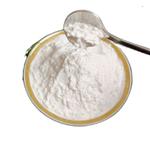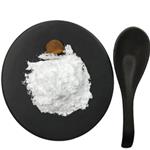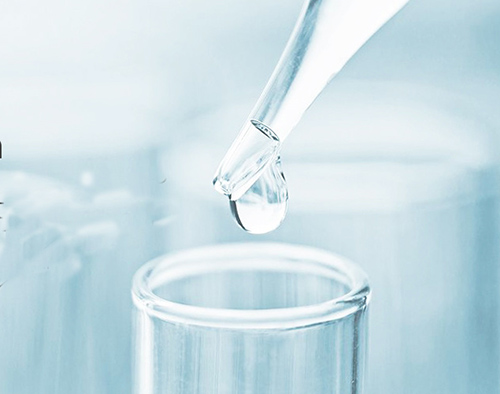The brief introduction of Lithium bis(trifluoromethanesulfonimide)
Apr 20,2022
Introduction
Lithium bis(trifluoromethanesulfonimide) is an organic compound with the chemical formula C2F6LiNO4S2, which is a white crystal or powder with high electrochemical stability and electrical conductivity[1], and has no effect on aluminum current collectors at higher voltages. Corrosion, commonly used as lithium ion battery, organic electrolyte lithium salt. Lithium bis(trifluoromethanesulphonyl)imide, commonly referred to as LiTFSI, is a hydrophilic salt. It is a safer alternative to lithium-ion batteries. Because of its high solubility in water,LiTFSI has been used as a lithium salt in water salt electrolyte for aqueous lithium-ion batteries.

Picture 1 Lithium bis(trifluoromethanesulfonimide) powders
Application fields editing broadcast
Lithium salt as an organic electrolyte for lithium batteries. LiN(CF3SO2)2 is used as a lithium electrolyte lithium salt, and the moisture content should be less than 100ppm, generally around 40ppm, before it can be used. Used as an organic electrolyte lithium salt for lithium ion batteries, with high electrochemical stability and electrical conductivity. And there is no corrosive effect on the aluminum current collector at higher voltages. 1 mol/L electrolyte solution was prepared with EC/DMC. Conductivity up to 1.0x10-2 S/cm. The conductivity is still above 10-3 S/cm at -30°C. This is extremely important for military applications[2].
As an important part of lithium-ion battery, electrolyte lithium salt can not only provide free shuttle ions for lithium-ion battery and bear the role of ion transmission inside the battery, but also form a protective layer on the surface of electrode material, which largely determines the capacity, working temperature, cycle performance, power density, energy density and safety of lithium-ion battery. At present, electrolyte lithium salts for lithium batteries mainly include inorganic lithium salts and organic lithium salts. Lithium bis(trifluoromethanesulphonyl)imide belongs to inorganic lithium salt.
As a catalyst in different reactions
LiN(CF3S02)2: and its same series of compounds MN(RsSO2)2 (wherein, M is a monovalent cation, such as H+, U+, Na+, etc.; Rf is CF3, C2F5, C3F7, C4F9 and other perfluoroalkyl groups), It is a Lewis acid catalyst for organic catalytic cracking, hydrocracking, catalytic reforming, isomerization, olefin hydration, toluene disproportionation, alcohol dehydration and acylation reactions.
Catalyst generally refers to a substance that increases the reaction rate without changing the change of Gibbs free energy. It can also be expressed as a substance that can improve the chemical reaction rate without changing the chemical balance in the chemical reaction, and its quality and chemical properties have not changed before and after the chemical reaction. According to statistics, more than 90% of industrial processes use catalysts, such as chemical, petrochemical, biochemical and environmental protection. When Lithium bis(trifluoromethanesulphonyl)imide is used as catalyst, it can effectively improve the reaction rate and reduce the reaction time and energy consumption. Therefore, Lithium bis(trifluoromethanesulphonyl)imide is widely used in chemical reactions in various biological, chemical and pharmaceutical industries.
The role in preparation of ionic liquid
Lithium bis(trifluoromethanesulphonyl)imide can be uesd to the preparation of important ionic liquids at room temperature. Ionic liquid has become a new type of green solvent because of its unique physical and chemical properties. It provides new opportunities for the development of new green processes and the upgrading of traditional heavy pollution and high energy consumption industrial processes. Ionic liquids play a very important role in the capture, separation, transformation and utilization of carbon dioxide, the absorption of sulfur dioxide, wastewater treatment and the degradation and recycling of waste plastics. Lithium bis(trifluoromethanesulfonimide) can be used to prepare ionic liquids at low cost and high efficiency. Therefore, Lithium bis(trifluoromethanesulfonimide) is selected as the raw material in the preparation of many ionic liquids in many reactions.
Reference
1 Decaux C, Lota G, Raymundo-Piñero E, et al. Electrochemical performance of a hybrid lithium-ion capacitor with a graphite anode preloaded from lithium bis (trifluoromethane) sulfonimide-based electrolyte[J]. Electrochimica Acta, 2012, 86: 282-286.
2 Marinaro M, Theil S, Jörissen L, et al. New insights about the stability of lithium bis (trifluoromethane) sulfonimide-tetraglyme as electrolyte for Li–O2 batteries[J]. Electrochimica Acta, 2013, 108: 795-800.
- Related articles
- Related Qustion
- Lithium Bis(trifluoromethanesulphonyl)imide: Applications in Battery Technologies and Toxicity Oct 28, 2024
Lithium bis(trifluoromethanesulfonyl)imide, often simply referred to as LiTFSI, is a hydrophilic salt with the chemical formula LiC2F6NO4S2. as a safer alternative to commonly used lithium hexafluorophosphate.
Para-hydroxyacetophenone s a white needle-like crystal at room temperature, flammable, easily soluble in hot water, methanol, ethanol, ether, acetone, benzene, and insoluble in petroleum ether....
Apr 20,2022APIDipropylene glycol methyl ether is an organic compound with a molecular formula of C7H16O3. Colorless viscous liquid with pleasant odor. Miscible with water and various organic solvents.....
Apr 20,2022APILithium bis(trifluoromethanesulphonyl)imide
90076-65-6You may like
Lithium bis(trifluoromethanesulphonyl)imide manufacturers
- Lithium Bis(Trifluoromethanesulphonyl)Imide
-

- $10.00 / 1kg
- 2024-11-16
- CAS:90076-65-6
- Min. Order: 1kg
- Purity: 99.9%
- Supply Ability: 10000
- Lithium bis(trifluoromethanesulphonyl)imide
-

- $99.00/ ton
- 2024-11-16
- CAS:90076-65-6
- Min. Order: 1ton
- Purity: 99%
- Supply Ability: 5000
- Lithium bis(trifluoromethanesulphonyl)imide
-

- $60.00/ kg
- 2024-11-15
- CAS:90076-65-6
- Min. Order: 1kg
- Purity: 99%
- Supply Ability: 5000kg/week






